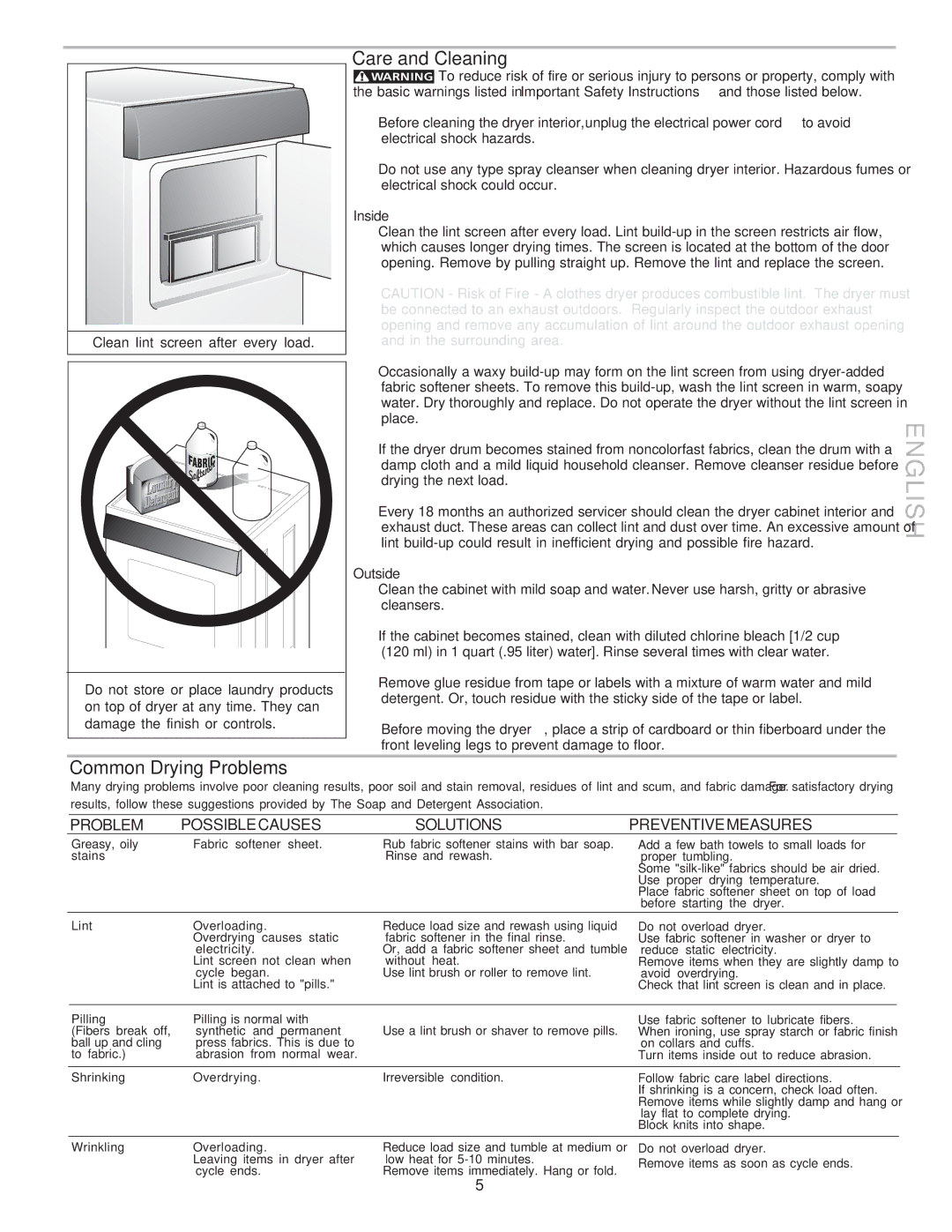NLPWD15 specifications
The Frigidaire NLPWD15 is an innovative addition to the world of compact laundry appliances, designed for those who value efficiency and convenience without compromising on performance. This portable washer and dryer combo is ideal for apartments, small homes, or anyone seeking a flexible laundry solution that can be relocated with ease.One of the standout features of the NLPWD15 is its 1.5-cubic-foot capacity, which is impressive for a compact unit. It allows users to wash and dry a variety of fabrics, accommodating everything from delicate items to heavier garments. This unit is designed to handle up to 12 pounds of laundry, making it suitable for small loads while being able to tackle the demands of daily living.
The NLPWD15 offers multiple wash cycles, including options for normal, heavy, and delicate fabrics. This versatility ensures that users can select the appropriate cycle for their laundry, enhancing fabric care and cleaning efficacy. Additionally, it features a range of water levels and temperature settings, allowing for customizable settings based on the user's needs.
Another significant aspect of the Frigidaire NLPWD15 is its advanced spin technology, which helps to remove excess water from clothes. This not only cuts down the drying time but also increases energy efficiency. With a spin speed of up to 800 RPM, users can expect laundry to come out drier, which ultimately reduces time spent on laundry chores.
In terms of design, the NLPWD15 is compact and portable. Its lightweight structure and built-in wheels make it easy to move from one location to another, whether it's from a bedroom to a laundry room or simply rolling it away for storage. The top-loading design allows for easy loading and unloading, a significant advantage in tight spaces.
The energy-saving feature of the NLPWD15 is another highlight, as it complies with energy-efficient standards, ultimately helping to reduce utility bills while being environmentally friendly. Its user-friendly control panel is intuitive, allowing users to easily set their preferred cycles and settings at the touch of a button.
In conclusion, the Frigidaire NLPWD15 is a compact, efficient, and versatile laundry solution perfect for modern living. With its stylish design, multiple cycles, energy-saving capabilities, and portability, it meets the needs of users looking for a compact appliance that doesn't sacrifice performance or functionality. Whether in a small apartment or a larger home, the NLPWD15 makes laundry day a breeze.

